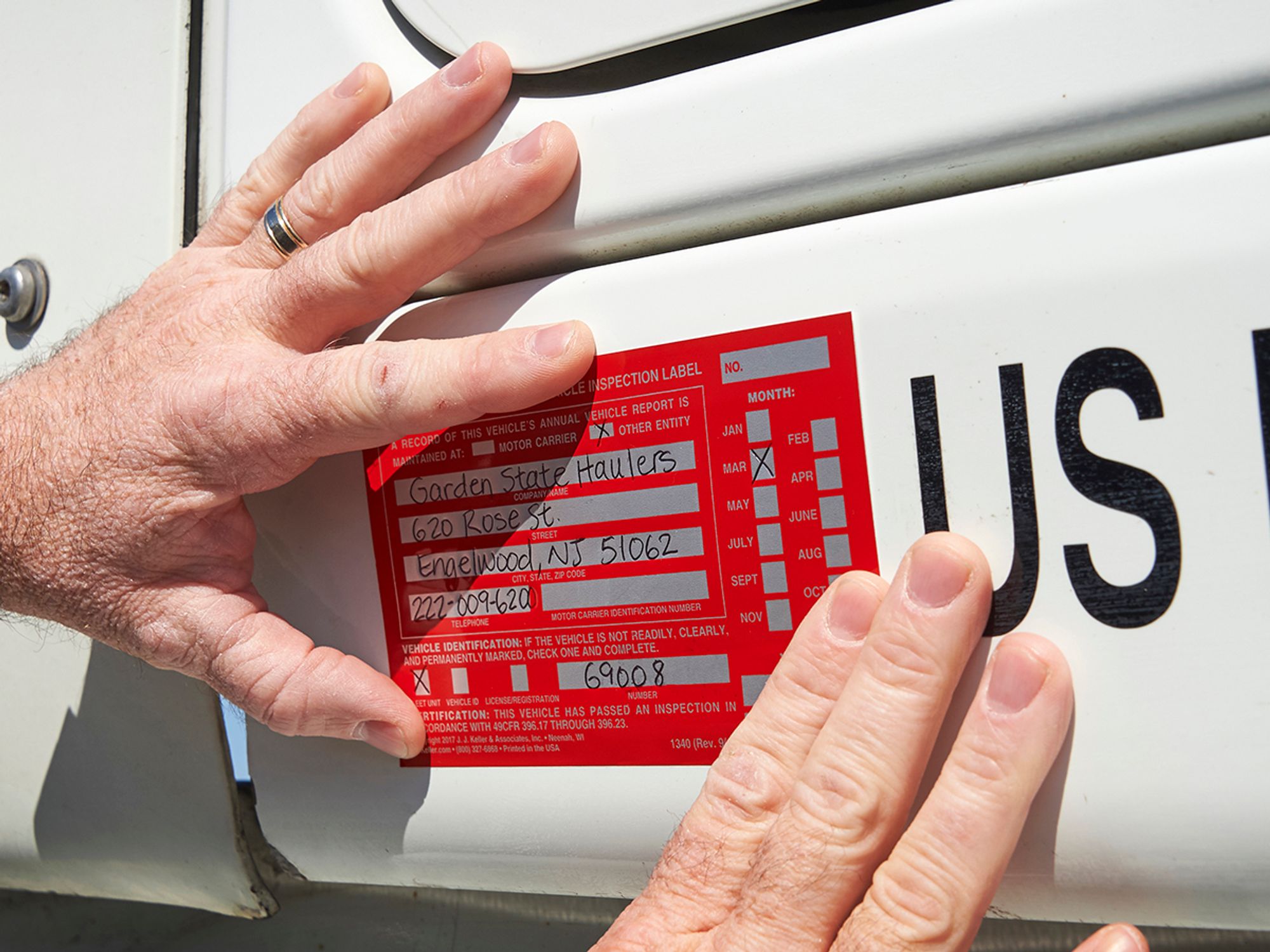Annual CMV inspections

- Proof of having passed an annual inspection must always be on the commercial motor vehicle (CMV).
- If a CMV has not been inspected according to federal standards within the past year, or if there is no proof of inspection, then the vehicle cannot be operated on a public roadway.
- The inspection report must be retained where the vehicle is housed or maintained, for 14 months.
CMVs must pass a comprehensive inspection at least annually and must carry proof of having passed it.
This annual or “periodic” inspection can be satisfied through a carrier’s own inspection program, a third-party business, or a state inspection program, if the inspection complies with federal or compatible state standards. All vehicles used in a combination must be inspected, including trailers and converter dollies, not just power units.
The inspection must cover at least the components listed in Appendix A to Part 396, which also describes the conditions that would cause a vehicle to fail the inspection.
The motor carrier that has possession of the vehicle is responsible for the inspection. If a vehicle has not been inspected according to federal standards within the past year, or if there is no proof of inspection, then the vehicle cannot be operated on a public roadway. Intermodal equipment providers are responsible for the annual inspection of intermodal equipment that is interchanged to motor carriers.
What is ‘annually’?
An annual inspection must be performed at least annually, which generally means at least every 365 days. Though an inspection sticker may show only the month and year of the last inspection — and though a DOT inspector may choose to give extra time — it’s best to perform the next inspection before a year has passed since the exact date of last inspection. Inspections performed under a mandatory state inspection program, however, are valid for 12 months from the last day of the month in which the inspection was performed.
Proof of inspection
Proof of having passed an annual inspection must always be on the vehicle when operating on a highway. This proof can either be:
- A copy of the full inspection report that was prepared by the inspector; or
- A sticker, decal, or similar document that includes the inspection date, the name and address of the location where the inspection report is being kept, information identifying the vehicle if the vehicle is not clearly marked, and a certification that the vehicle passed an inspection in accordance with Section 396.17.
Locating the sticker
The regulations do not specify where an inspection sticker must be placed on a vehicle. However, the driver is responsible for making sure an inspector can access the sticker upon request, so the driver must know where the sticker is located and must make sure that it remains legible and current. To that end, it’s a good idea to place the sticker in an easily accessible location that’s protected from the elements, such as on the driver’s side door jamb or on the rear corner of the cab.
Inspection options
The following are ways the inspection requirements can be satisfied:
- Mandatory state inspection — A vehicle will satisfy the annual inspection requirements if inspected under a state or provincial mandatory inspection program in Alabama, California, Connecticut, Hawaii, Illinois, Louisiana, Maine, Maryland, Massachusetts, Michigan, Minnesota, New Hampshire, New Jersey, New York, Ohio, Pennsylvania, Rhode Island, Texas, Utah, Vermont, Virginia, West Virginia, Wisconsin, the District of Columbia, any Canadian province, or under Mexico’s NOM (Norma Oficial Mexicana or Official Mexican Standard) 68 inspection program.
- Commercial garage or leasing facility — A vehicle can be inspected by a commercial garage, leasing company, truck stop, or other third party if the company has appropriate inspection facilities and uses qualified inspectors. The motor carrier can allow the inspecting company to retain all required documentation, but the motor carrier remains responsible for compliance.
- Self-inspection — A final option is for the motor carrier to do the inspections itself, using qualified inspectors.
New vehicles
New vehicles must also carry proof of annual inspection, but a vehicle dealer who complies with the inspection requirements may provide the documentation (sticker and/or inspection report) for the initial inspection.
Inspection report
The qualified inspector performing the annual inspection must prepare an inspection report that includes:
- The individual performing the inspection;
- The motor carrier operating the vehicle, or the intermodal equipment provider intending to interchange the vehicle to a motor carrier;
- The date of the inspection;
- The identity of the vehicle inspected;
- The components inspected and the results of the inspection; and
- A statement certifying the accuracy and completeness of the inspection.
The inspection report (or a copy) must be retained where the vehicle is housed or maintained, for 14 months.
